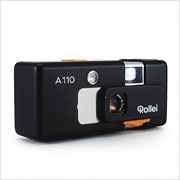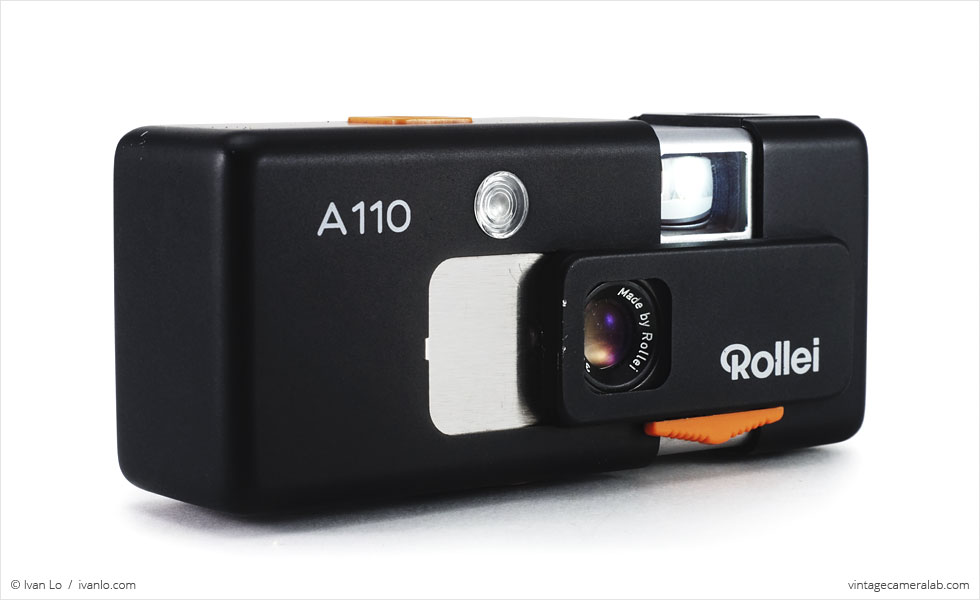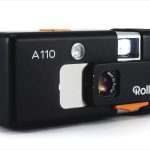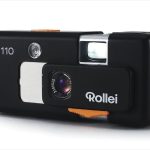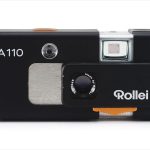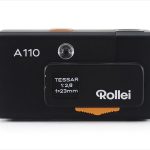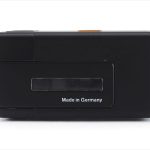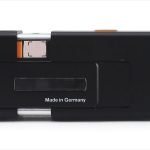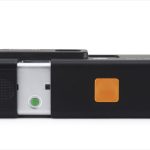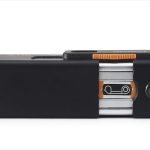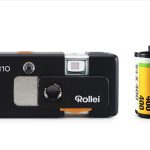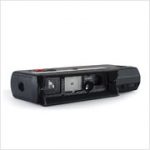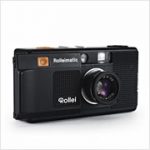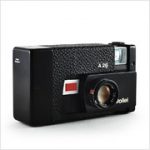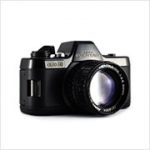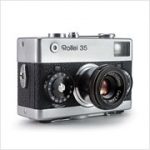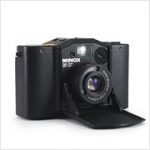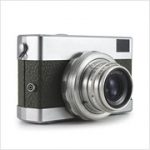Rollei A110 Specifications
| Manufacturer: | Rollei-Werke Franke & Heidecke |
| Origin: | West Germany |
| (modern day Germany) | |
| Made in: | Braunschweig, West Germany |
| (modern day Germany) | |
| and later Singapore | |
| Introduced: | 1974 |
| Type: | Subminiature, Viewfinder |
| Format: | 110 Film |
| Dimensions: | 8.5 x 4.4 x 3.3 cm |
| 10.2 x 4.4 x 3.3 cm (open) |
Rollei A110 Overview
The Rollei A110 is a high-end subminiature camera introduced by Rollei in 1974. After nearly ten years of the Rollei-16, which used the company’s own proprietary 16mm film cassette, Rollei decided to abandon the ultimately unsuccessful format and tasked legendary designer Heinz Waaske (who designed other innovative and groundbreaking models such as the as the Rollei 35, Rollei A26, and Rolleimatic) to create the A110 as the first of a new generation of subminiatures to use Kodak’s vastly more popular 110 film cartridge instead.
During its six year production life which saw manufacturing shift from Braunschweig to Singapore, the A110 was available in the normal black finish, a special (and exceedingly rare) gold version, a different gold version adorned with an atom symbol which was sold exclusively through the German retailer Otto, and another limited edition produced as gifts for the customers of Bitter, a German automotive tuning firm. For those who couldn’t justify the hefty price tag of 300 USD (about $1,400 in today’s economy) for the A110, there was also a cheaper, simpler version in the form of the silver Rollei E110.
To open the Rollei A110, simply grab opposite corners of the casing and pull it apart. The camera must be closed and reopened between exposures in order to cock the shutter and advance the film. As is common with other subminiatures, the features are pretty basic and the exposure is automatic. When the camera is open, a slide is pulled back to reveal the Zeiss Tessar 23mm f/2.8 lens. Below it is the triangular focus slider which is connected to a focusing scale that is visible through the viewfinder. Between the viewfinder and the ‘A110’ badge is a circular light meter window. On the top plate, the PX27 battery compartment can be found on the user’s left hand side of the camera followed by a circular green button which will cause the little black square next to light up if there’s enough light available for a hand held photograph (solid green light means it’s okay, a flashing green light indicates that the camera should be placed on a tripod), and finally a large orange shutter button.
The back plate is home to the viewfinder window with a long rectangular orange button that releases the battery compartment and the film door. On the bottom is a standard tripod socket followed by a 110 film cassette icon flanked by two orange tabs. The orange tab nearest the tripod socket is for when the film has been finished while the orange tab on the other side releases the film door for loading and unloading. Located on the user’s left hand side of the camera is a tiny socket which can be used to interface with an accessory flash cube attachment.
Back when I first acquired my Rollei A26, I was so hopelessly enamored with its clever engineering that I pretty much started looking for an A110 right away. There’s just something so incredibly satisfying about the mechanical “click-clack” of closing and opening the camera to cock the shutter and watching all the little components react. I also love Rollei’s brave (but slightly mad) decision to jump head-first into the cheap, plastic Kodak Instamatic dominated 126 and 110 markets with relatively expensive, high-quality, metal cameras.
Find your very own Rollei A110 on eBay.
McKeown, James M. and Joan C. McKeown’s Price Guide to Antique and Classic Cameras, 2001-2002. (Grantsburg, WI, USA: Centennial Photo Service, 2001), p 586.
“Heinz Waaske,” Wikipedia, https://en.wikipedia.org/wiki/Heinz_Waaske
